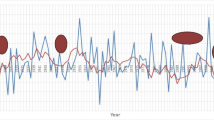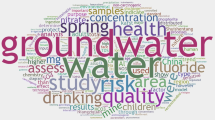Abstract
Water resources management to maintain a balance between demand and supply requires new technologies such as alternative water supply systems, specifically in arid and semiarid regions. This case study aimed to examine the community views about water issues as well as management strategies such as conservation and recycling that was conducted on 380 residents in two municipal regions of Tehran. Data were collected from February 2016 to November 2016 by constructed questionnaire with 314 suitable participants responding. Results showed an association between attitudes toward water management, age, gender and education. Improving public knowledge and clarification would help to enhance social trust and positive attitudes, as well as encourage the adoption of more responsible behaviors toward water resources. The government, local association and water resources managers are key agents for the handling of sociocultural barriers for water resources sustainability in the world.





Similar content being viewed by others
References
Abu-Ashour, J., & Jamrah, A. (2008). Survival of bacteria in soil subsequent to greywater application. International Journal of Environmental Studies: Greywater. https://doi.org/10.1080/00207230701843413.
Abusam, A. (2008). Reuse of grey water in Kuwait. International Journal of Environmental Studies,65(1), 103–108. https://doi.org/10.1080/00207230701868204.
Allan, T., Keulertz, M., & Woertz, E. (2015). The water, food, energy nexus: An introduction to nexus concepts and some conceptual and operational problems. International Journal of Water Resources Development,31(3), 301–311. https://doi.org/10.1080/07900627.2015.1029118.
Auld, G., Mallett, A., Burlica, B., Nolan-Poupart, F., & Slater, R. (2014). Evaluating the effects of policy innovations: Lessons from a systematic review of policies promoting the low-carbon technology. Global Environmental Change,29(Supplement C), 444–458. https://doi.org/10.1016/j.gloenvcha.2014.03.002.
Bagatin, R., Klemes, J., Reverberi, A. P., & Huisingh, D. (2014). Conservation and improvements in water resource management: A global challenge. Journal of Cleaner Production,77, 1–9. https://doi.org/10.1016/j.jclepro.2014.04.027.
Baggett, S., Jeffrey, P., & Jefferson, B. (2006). Risk perception in participatory planning for water reuse. Desalination,187(1), 149–158. https://doi.org/10.1016/j.desal.2005.04.075.
Berenguer, J., Corraliza, J. A., & Martín, R. (2005). Rural–urban differences in environmental concern, attitudes, and actions. European Journal of Psychological Assessment,21(2), 128. https://doi.org/10.1027/1015-5759.1021.1022.1128.
Bland, J. M., & Altman, D. G. (1997). Cronbach’s alpha. BMJ: British Medical Journal,314(7080), 570–572. https://doi.org/10.1136/bmj.314.7080.572.
Chuvieco, E. (2012). Religious approaches to water management and environmental conservation. Water Policy,14, 9–20. https://doi.org/10.2166/wp.2012.000.
Clark, W. A., & Finley, J. C. (2007). Determinants of water conservation intention in Blagoevgrad, Bulgaria. Society & Natural Resources,20(7), 613–627. https://doi.org/10.1080/08941920701216552.
Cleaver, F. (2012). Development through bricolage: Rethinking institutions for natural resource management. London: Routledge.
Dolnicar, S., & Hurlimann, A. (2009). Drinking water from alternative water sources: Differences in beliefs, social norms, and factors of perceived behavioral control across eight Australian locations. Water Science and Technology, 60(6), 1433–1444. http://ro.uow.edu.au/commpapers/634.
Dolnicar, S., Hurlimann, A., & Grun, B. (2012). Water conservation behavior in Australia. Journal of Environmental Management,105, 44–52. https://doi.org/10.1016/j.jenvman.2012.03.042.
Dolnicar, S., Hurlimann, A., & Grün, B. (2011). What affects public acceptance of recycled and desalinated water? Water Research,45(2), 933–943. https://doi.org/10.1016/j.watres.2010.09.030.
Dolnicar, S., & Saunders, C. (2005). Marketing recycled water: Review of past studies and research agenda. In S. J. Khan, M. H. Muston, & A. I. Schaefer (Eds.), Integrated concepts in water recycling, Wollongong, February 14–17, 2005 (pp. 181–192).
FAO. (2009). How to feed the world in 2050. Rome: Food and Agriculture Organization of the United Nations.
Godfray, H. C. J., Beddington, J. R., Crute, I. R., Haddad, L., Lawrence, D., Muir, J., et al. (2010). Food security: The challenge of feeding 9 billion people. Science,327, 812–818. https://doi.org/10.1126/science.1185383.
Gregory, G. D., & Leo, M. D. (2003). Repeated behavior and environmental psychology: The role of personal involvement and habit formation in explaining water consumption1. Journal of Applied Social Psychology,33(6), 1261–1296. https://doi.org/10.1111/j.1559-1816.2003.tb01949.x.
Hirabayashi, Y., Mahendran, R., Koirala, S., Konoshima, L., Yamazaki, D., Watanabe, S., et al. (2013). Global flood risk under climate change. Nature Climate Change,3, 816–821. https://doi.org/10.1038/nclimate1911.
Hukka, J. J., & Katko, T. S. (2015). Appropriate pricing policy needed worldwide for improving water services infrastructure (PDF). Journal-American Water Works Association,107(1), E37–E46. https://doi.org/10.5942/jawwa.2015.5107.0007.
Hurlimann, A. (2007). Is recycled water use risky? An Urban Australian community’s perspective. The Environmentalist,27(1), 83–94. https://doi.org/10.1007/s10669-007-9019-6.
Hurlimann, A., & Cooperative Research Centre for Water Quality and Treatment (Australia). (2008). Community attitudes to recycled water use: An urban Australian case study. Part 2. Salisbury: CRC for Water Quality and Treatment.
Hurlimann, A., Hemphill, E., McKay, J., & Geursen, G. (2008). Establishing components of community satisfaction with recycled water use through a structural equation model. Journal of Environmental Management,88(4), 1221–1232. https://doi.org/10.1016/j.jenvman.2007.06.002.
Karnib, A. (2017). A quantitative assessment framework for water, energy and food nexus. Computation-all Water, Energy, and Environmental Engineering,6, 11–23. https://doi.org/10.4236/cweee.2017.61002.
Koop, S. H. A., & van Leeuwen, C. J. (2017). The challenges of water, waste and climate change in cities. Environment, Development and Sustainability,19, 385–418. https://doi.org/10.1007/s10668-016-9760-4.
Krejcie, R. V., & Morgan, D. W. (1970). Determining sample size for research activities. Educational and Psychological Measurement,30, 607–610.
Maimon, A., Friedler, E., & Gross, A. (2014). Parameters affecting greywater quality and its safety for reuse. The Science of the Total Environment,487, 20–25. https://doi.org/10.1016/j.scitotenv.2014.03.133.
McDonald, R. I., Chai, H. Y., & Newell, B. R. (2015). Personal experience and the ‘psychological distance’ of climate change: An integrative review. Journal of Environmental Psychology,44, 109–118. https://doi.org/10.1016/j.jenvp.2015.10.003.
Miller, E., & Buys, L. (2008). The impact of social capital on residential water-affecting behaviors in a drought-prone Australian community. Society & Natural Resources,21(3), 244–257. https://doi.org/10.1080/08941920701818258.
Nancarrow, B. E., Leviston, Z., Po, M., Porter, N. B., & Tucker, D. I. (2008). What drives communities’ decisions and behaviors in the reuse of wastewater(Community acceptance of wastewater reuse). Water Science and Technology,57(4), 485–491. https://doi.org/10.2166/wst.2008.160.
Nasrabadi, T., Sharif Vaghefi, H. R., & Nabi Bidhendi, G. R. (2013). Water consumption management and its role in energy saving, case study of Tehran, Iran. International Journal of Environmental Research,7(1), 235–240.
Newell, B. R., & Pitman, A. J. (2010). The psychology of global warming: Improving the fit between the science and the message. Bulletin of the American Meteorological Society,91(8), 1003–1014. https://doi.org/10.1175/2010BAMS2957.1001.
Nuñez von Voigt, T., & Mohajeri, S. (2013). Water demand management. Water end-use measurements and water consumption patterns in Tehran, young cities research brief, German-Iranian Research Project. Berlin: Germany. www.youngcities.org.
Oron, G., Adel, M., Agmon, V., Friedler, E., Halperin, R., Leshem, E., et al. (2014). Greywater use in Israel and worldwide: Standards and prospects. Water Research,58, 92–101. https://doi.org/10.1016/j.watres.2014.03.032.
Penn, R., Hadari, M., & Friedler, E. (2012). Evaluation of the effects of greywater reuse on domestic wastewater quality and quantity. Urban Water Journal,9(3), 137–148. https://doi.org/10.1080/1573062X.2011.652132.
Pinto, U., & Maheshwari, B. L. (2010). Reuse of grey water for irrigation around homes in Australia: Understanding community views, issues, and practices. Urban Water Journal,1, 1–13. https://doi.org/10.1080/15730620903447639.
Prathapar, S. A., Jamrah, A., Ahmed, M., Al Adawi, S., Al Sidairi, S., & Al Harassi, A. (2005). Overcoming constraints in treated greywater reuse in Oman. Desalination,186(1–3), 177–186. https://doi.org/10.1016/j.desal.2005.01.018.
Ravanshadnia, M., Ghanbari, M., & Fardani, M. H. (2015). Planning crisis management of water resources in Tehran in the next twenty five years. Journal of Applied Environmental and Biological Sciences,5(10), 50–59.
Redwood, M. (2008). The application of pilot research on grey water in the Middle East North Africa region (MENA). International Journal of Environmental Studies,65(1), 109–117. https://doi.org/10.1080/00207230701850152.
Ryan, A. M., Spash, C. L., & Measham, T. G. (2009). Socio-economic and psychological predictors of domestic greywater and rainwater collection: Evidence from Australia. Journal of Hydrology,379, 164–171. https://doi.org/10.1016/j.jhydrol.2009.10.002.
Tajrishy, M. & Abrishamchi, A. (2005). Integrated approach to water and wastewater management for Tehran, Iran. In Water Conservation, Reuse, and Recycling, Proceedings of the Iranian-American Workshop. National Academies Press.
Tajrishy, M., Abrishamchi, A., & Abdolghafoorian, A. (2014). Water reuse and wastewater recycling: Solutions to Tehran’s growing water crisis. In R. QuentinGrafton, P. Wyrwoll, C. White, & D. Allende (Eds.), Global water: Issues and insights. Canberra: The Australian National University, ANU Press.
The United Nations World Water Development Report. (2016). Freshwater: State of the resource, demand, and access. http://unesdoc.unesco.org/images/0024/002440/244041e.pdf.
Willis, R. M., Stewart, R. A., Panuwatwanich, K., Williams, P. R., & Hollingsworth, A. L. (2011). Quantifying the influence of environmental and water conservation attitudes on household end use water consumption. Journal of Environmental Management,92, 1996–2009. https://doi.org/10.1016/j.jenvman.2011.03.023.
Yang, L. E., Chan, F. K. S., & Scheffran, J. (2016). Climate change, water management and stakeholder analysis in the Dongjiang River basin in South China. International Journal of Water Resources Development,34(2), 166–191. https://doi.org/10.1080/07900627.2016.1264294.
Zhang, Q., Xiao, M., Singh, V., & Chen, X. (2013). Copula-based risk evaluation of droughts across the Pearl River basin, China. Theoretical and Applied Climatology,111, 119–131. https://doi.org/10.1007/s00704-012-0656-4.
Acknowledgements
We would like to acknowledge the University of Welfare and Rehabilitation Sciences of Tehran for supporting this work.
Author information
Authors and Affiliations
Corresponding author
Ethics declarations
Conflict of interest
All researchers declare no conflicts exist.
Rights and permissions
About this article
Cite this article
Moshtagh, M., Mohsenpour, M. Community viewpoints about water crisis, conservation and recycling: a case study in Tehran. Environ Dev Sustain 21, 2721–2731 (2019). https://doi.org/10.1007/s10668-018-0158-3
Received:
Accepted:
Published:
Issue Date:
DOI: https://doi.org/10.1007/s10668-018-0158-3




